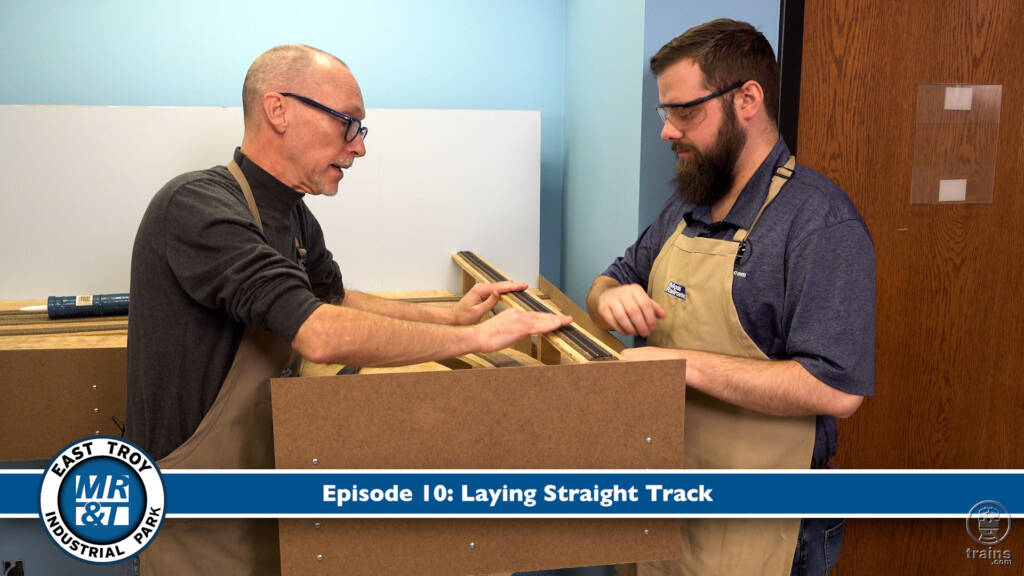The HO scale (1:87.1) East Troy Industrial Park project layout wouldn’t be a model railroad without the trackwork! In this episode, hosts David Popp and Bryson Sleppy work to install sections of flexible straight track, before demonstrating how to add standard turnouts (track switches) along the line.
Be sure to keep up with the construction progress by linking into the Trains.com Workshop Webcam (available 24/7), and the full series of helpful, instructional videos rolling out every month until the effort concludes. Even then, the fun will continue in frequent Trains.com articles/updates and Model Railroader print features, beginning with the January 2026 issue. You won’t want to miss the Expert Tips and Techniques the crew will share with you along the way, as they have a bit of fun bringing the ETIP into fruition!










